#sustainablelifestyle
Text
Bleached corals ingest microplastics.
Studies have found that reef building corals ingest microplastics when exposed to temperatures above normal.

Normally,corals rely on the photosynthetic algae on their surface to provide them with energy.

When temperatures rise, the algae are expelled (bleaching) and most corals eventually die from starvation but some corals start feeding on zooplankton in the water column and in turn also take in microplastics.
So how is this a problem? Feeding on large amounts of microplastics can result in:
Bleaching
Reduced growth as energy reserves drop since plastic has no nutritive value
Reduced feeding on nutritious prey
Tissue necrosis( a coral disease that causes peeling of tissues and death)
Reduced mineralisation of coral skeletons thus reduced growth rates
With coral reefs already facing multiple stressors ; global climate change, ocean acidification and water pollution with a short period for recovery, microplastics could worsen the situation putting the survival of coral reefs at risk.
#stem academia#conservation#plastic#plastic pollution#plastic waste#sustainability#sustainablelifestyle#ocean#coral sea#coral reef#artificial reef#marine life#animals#marine biology#microplastics#plankton#bleaching#climate change
150 notes
·
View notes
Photo

Herbststimmung
#herbst#autumn#hiking#wandern#wanderlust#stimmung#reisepass#sustainablelifestyle#trekking#journey#travelling#travel
71 notes
·
View notes
Text

Hey, we're selling fresh air! Do you need it? 😮
Just kidding, it's April Fools' Day! 🎉
We don't sell air, we are just one of the creators of fresh air! With Jerdazen's cutting-edge air purification technology, we will create a well-conditioned environment surrounded by fresh air for you.
Fresh air not only enhances your physical and mental well-being but also plays a vital role in boosting enthusiasm in work and life.
Currently, we are not promoting specific products but rather hope that you can benefit from suitable air purifiers! 🫧😊
4 notes
·
View notes
Text
#sustainableworld#sustainablefood#sustainablehousing#sustainableenergy#newparadigm#consiousliving#conscientiousliving#creatingthefuture#opensourcesustainability#globalsustainability#globaltransformation#onecommunityglobal#sustainablecommunity#ecovillage#highestgoodliving#onecommunity#sustainability#opensource#permaculture#solutionmodels#greenliving#highestgood#teacherdemonstrationhubs#sustainablcivilization#radicalsustainability#sustainablelife#sustainablelifestyle#sustainablesociety#fulfilledliving#thevenusproject
3 notes
·
View notes
Text

#aesthetic#beige#slow living#moodboard aesthetic#sustainablelifestyle#sustainability#sustainableliving
2 notes
·
View notes
Text
#sustainability#climate change#conservation#environment#ecosystem#natural resources#plants#sustainableliving#sustainablelifestyle#save water#recycling#reuse#recycle#carbon footprint
2 notes
·
View notes
Text

"Breaking Free: Celebrating Your 2023 Victories and Welcoming an Uncharted 2024"
Merry Christmas Lifestylers!
Here we are, at the brink of a new chapter, bidding farewell to 2023. If you're reading this, take a moment. Yes, right now. Cheers to you for making it through the rollercoaster ride that this year has been. YOU, my friend, are a rockstar!
Let's pause and give a standing ovation to resilience, courage, and the unwavering strength you've shown. In a world where every day can feel like a test, you've not only survived but thrived. Despite the storms, the chaos, and the hurdles that life flung your way, you stood tall and kept going. That, my dear, deserves a round of applause.
As we step into 2024, here's a little secret: it's absolutely okay if you don't have a meticulously crafted roadmap for the year ahead. Life isn't always about having a foolproof plan; sometimes, it's about embracing the uncertainty, dancing in the moment, and relishing the unknown adventures waiting for us.
Here's a toast to your perseverance. The fact that you're here, breathing and reading these words, speaks volumes about your resilience. You've conquered battles, big and small. Maybe you've taken baby steps or giant leaps, but progress is progress, no matter the size. Even the tiniest steps forward deserve a standing ovation.
So, as you venture into this new chapter, wear your courage as your crown. Embrace the unknown with open arms and a heart full of hope. Believe that what's ahead is filled with magic waiting to unfold.
God wants you to live FREE! Remember, the UnCaiged Life you dream of isn't just a dream; it's yours for the taking. Step into it with confidence, sass, and a pinch of audacity. Life's too short for cages; spread those wings and soar!
As we bid adieu to 2023, let's raise our glasses to the journey behind us and the adventure awaiting us. Cheers to growth, to resilience, and to the vibrant souls that we are. Here's to 2024 – a canvas waiting for your colorful strokes.
So, my dear beauties, take a deep breath, smile at the possibilities, and let's leap into the unknown together. You've got this!
With heaps of glitter and infinite sparkles, Caige Phoenix
@caigephoenix
#business#lifelessons#lifestyle#mentalhealth#mentalheathsupport#mentalheathawareness#christianfaith#faith#empowerment#empoweredwoman#empoweringwomen#empoweryourself#sustainablelifestyle#boldliving#womenwhoupliftwomen#wellness#healthy#fitness#women
2 notes
·
View notes
Text


Being an eco-friendly small pet owner 🐭
In April, Tom and I finally got our first pets together - two little mice! Having grown up with hamsters, I was painfully aware of how plastic-heavy small animals are. Their food, treats and bedding are all stored in plastic bags and their cages and toys are often ladened with plastic.
We were desperate to have life other than houseplants to look after, and we had fallen in love with the idea of getting mice. We were also desperate to not break the planet by getting them, however.
So! Here I am to share with you how our eco-friendly mice were brought about. A lot of this can be applied to rats, hamsters and gerbils etc. but bear in mind the specific care points are mouse-centric.
Before going into any details, I just want to disclaim that I was crushing on these mice hard, months before they were even born. I budgeted for them three months ahead and chipped away at buying their things over the course of those three months.
My mentality is to buy secondhand if I can, and if I can't then to buy high quality (and often therefore a bit pricey). This is manageable for me, but only because I'm an organisation gremlin and plan my budgets to the extreme.
🏠Starting with the cage:

This cage is the Ferplast Cage for Hamsters and Mice KARAT 60. The key thing here for me was that it's made of glass and metal, with minimal plastic - only the clips and wheel are made of plastic. Unfortunately for mice, they need a solid wheel which means we couldn't get a metal one. For mice, they need good ventilation as they're prone to respiratory diseases. They also need a deep base to the cage so they can exhibit their natural digging behaviour. The bar spacing of this cage is mice appropriate (0.6 mm or less) as mice are small! They can squeeze between the bars of some hamster cages.
Food bowls! Made of ceramic, one for grains, one for fruit and veg. Shallow enough that they can perch on them (often in them) to nom.
Wooden house and log. Instead of a plastic house, you can get lovely wooden ones that double up as good chewing posts for them as they get older. Plastic isn't the best thing for them to get their teeth onto.
You can't really see it in this photo, but the water bottle I have for them is made of glass instead of plastic. Always check the labels at the shop to make sure anything you're buying is suitable for the critter you're getting!
Edit: It's been brought to my attention that the scale of this cage isn't necessarily obvious from the photo! In terms of gallons, the glass tank is around 12 gallons and the cage area is a further 17 gallons, bringing the total volume of the whole area up to about 29 gallons (these are from my measurements, from the measurements on the product page, it comes out more around 27 gallons. Mine were a bit rough so maybe trust this number more!). For our two mice, this is an appropriate amount of space.
🛏️Now onto bedding:
Mice need materials they can burrow into, but also need a substrate at the very base of the cage to absorb their urine. If you're going a plastic route, this normally involves cat litter at the base and a mix of paper shredding and tissue shredding (if you get sawdust/wood chip, you have to be very careful with what wood it is from, as some trees irritate their respiratory systems)
My plastic-free suggestion depends on you already getting your loo roll and kitchen roll from a plastic-free company (like Bumboo or Who Gives a Crap).
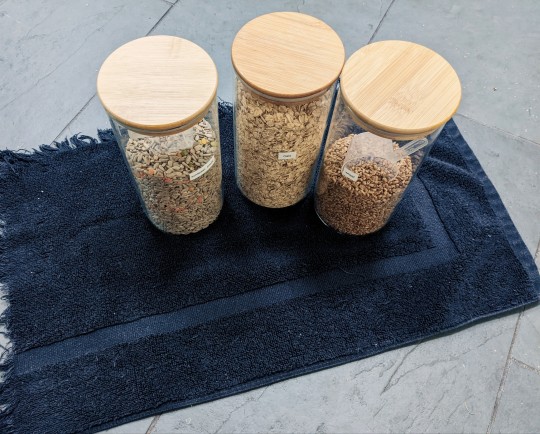
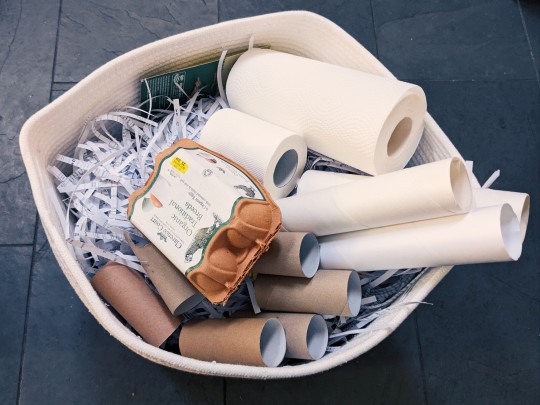
Substrate: As you can see here, the substrate we use is a (slightly mangled from the washing machine) bath mat. It's 100% cotton and every fortnight when we clean them out, we shake it out in the garden and pop it in the washing machine. We have two that we cycle between so the girls never go without. Be careful with what material you buy - 100% cotton is fine, but if it's a blend with a synthetic fibre it should be avoided.
Burrowing materials: Why on earth would you buy paper and tissue pre-shredded in a big plastic bag when you could just...shred paper...and tissue...at home? I got myself a cheap shredder and have one of the technicians at work hoarding scrap paper for me that would otherwise go in the recycling bin, so I'm re-using stuff that would get junked. After its use here, it can then go in our home recycling as our council accepts shredding in mainstream recycling. Whenever we clean the girls out, we add in some loo roll and kitchen roll that we tear up into strips by hand. We never use up all of our loo roll and kitchen roll from each Bumboo order anyway, so it doesn't cost us any more than our standard subscription already. Plus, two mice really don't use up much!
Extra bits: Nutmeg and Honeysuckle are very happy burrowing, running in their wheel and Spidermanning it around the cage bars and the ceiling, but we do provide them with tubes to tunnel through and some DIY structures we've made for them to play with. These are just from our usual waste of loo roll and kitchen roll.
🍴Lastly, on to food:
Now, we love the girls and hope they life a very happy 2-years-life-expectancy, but mouse food from pet stores is honestly a rip-off. Looking at the ingredients and talking to the staff there, there was nothing we couldn't get from our local refill store and farmer's market.

The girls get sunflower seeds, oats and wheat in their grains bowl and a selection of seasonal fruit and veg in their other bowl. Every now and then they get treats of popcorn (plain), different seeds and nuts (not walnuts which are toxic) and even some suet and seed block from what I buy for the garden birds. Nutritionally, this is what they get from the mouse food in the store - the ingredients list is identical to what we give them, the store stuff is just all dehydrated instead.
They are very happy. Almost too much. One of them is weighing in at a whopping 27 g. We're trying our best, moving on...
My point being that it's easy to avoid the plastic if you have a good refill store near you. Ours is priced competitively to the local supermarkets, so this isn't actually an expensive venture at all. But if you're living somewhere like London and have a refill store near you, I know this price comparison is a distant fantasy with a lot of them. On the positive side, the sunflower seed and wheat jars in the photo above haven't been refilled since I filled them first three months ago. They really don't each much! (Apart from Honeysuckle. Twenty-seven grams).
Apart from some balls for them to run around in, and a little carry case for transport, these mice use absolutely zero plastic, a far cry from the plastic-hungry hamster care from my childhood.
In conclusion:
It takes:
planning
budgeting
sourcing of resources
certain habits to already be instilled
but it is possible.
Just because they're little and often seen as the "easy" pets, doesn't mean they shouldn't get just as much love and planning as you would put into getting a cat or dog. Owning any animal is a responsibility one should take seriously and I feel that rodents and fish get overlooked deeply (did you know that a goldfish on average should have a 20 gallon tank?).
Here's to giving all animals a good quality of life! 🐭
#goinggreenish#ecofriendly#microplastics#microfibres#environment#goinggreen#plasticfree#ecotips#sustainablelifestyle#sustainableliving#plasticfreeproducts#greenshopping#lifestyle#eco tips#eco friendly#green lifestyle#green shopping#plastic free products#sustainability#pets#pet supplies#little pets#mice#pet mice#pet mouse#eco pets#eco pet#eco friendly pet#plastic free pets#pet care
29 notes
·
View notes
Text
A beginner's guide to starting an organic garden
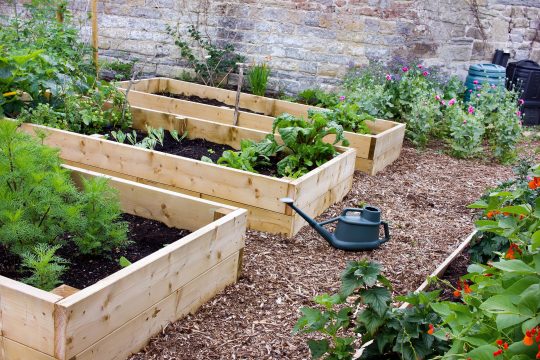
A Beginner's Guide to Starting an Organic Garden
Starting an organic garden can be a rewarding and enjoyable experience. Whether you're looking to grow your own fresh produce or create a beautiful outdoor space, an organic garden provides an opportunity to connect with nature and live a more sustainable lifestyle. In this beginner's guide, we'll provide you with the information you need to get started with your own organic garden.
Step 1: Plan Your Garden Before you start planting, it's important to plan your garden. Consider the amount of space you have available, the amount of sunlight your garden receives, and the types of plants you want to grow. Make a list of the plants you want to grow and research their specific growing requirements.
Step 2: Choose Your Location Choose a location for your garden that receives plenty of sunlight and has well-draining soil. Avoid areas with heavy foot traffic or areas where water tends to pool.
Step 3: Prepare Your Soil Healthy soil is key to a successful organic garden. Prepare your soil by adding organic matter such as compost, aged manure, or leaf litter. This will provide your plants with the necessary nutrients and help retain moisture in the soil.
Step 4: Start Planting When it's time to start planting, consider using seedlings instead of seeds. This will give your plants a head start and increase your chances of a successful harvest. Be sure to follow the specific planting instructions for each plant.
Step 5: Water and Maintain Your Garden Water your garden regularly, being careful not to overwater or underwater. Use natural pest control methods such as companion planting and handpicking pests. Remove weeds regularly to prevent them from competing with your plants for resources.
Step 6: Harvest and Enjoy Once your plants are mature and ready to harvest, enjoy the fruits of your labor! Harvest your vegetables at peak ripeness for the best flavor and nutrition.
Starting an organic garden may seem overwhelming at first, but with some planning and preparation, it can be a fun and rewarding experience. By following these basic steps, you can create a thriving garden that provides you with fresh, healthy produce and a deeper connection to the natural world.
Read the full article
#beginner'sguide#compost#harvesting#naturalpestcontrol#planting#rganicgarden#seedlings#soilpreparation#sustainablelifestyle#well-drainingsoil
3 notes
·
View notes
Video
13 Eco-Friendly Tips For Organising & Deep Cleaning Your Home
Looking for eco-friendly ways to organise and deep clean your home? Check out our top 13 tips for a greener, cleaner living space! From decluttering to natural cleaning solutions, here’s how to make your home more sustainable and kinder to the environment.
https://www.soovy.club/blog/eco-friendly-tips-organising-deep-cleaning-home-sustainable
#EcoFriendlyLiving#GreenCleaning#SustainableHome#NaturalCleaning#OrganicLiving#EnvironmentallyFriendly#EcoLiving#SustainableLiving#GreenLiving#EcoCleaning#OrganicCleaning#EcoFriendlyHome#GreenHome#SustainableHomeLiving#GreenCleaningTips#EcoFriendlyTips#EcoFriendlyLifestyle#sustainablelifestyle#NaturalHomeCleaning#EcoFriendlyProducts
4 notes
·
View notes
Text
#suburban homestead#suburban homesteading#homesteading#raising chickens#keeping chickens#chickens#egg laying#brooder#baby chicks#daily Hejny#backyard chickens#sustainablestyle#sustainablelifestyle#chicken keeping#fresh eggs#urban farming
5 notes
·
View notes
Text
There are more than 1000 species of sharks and rays worldwide. Sharks are apex predators in the ocean and they keep the ecosystem balanced. With decreasing populations, many ecosystems are becoming unbalanced leading to an increase in species that otherwise would have low populations and increased invasive species with no predators.
Due to overfishing and bycatch, some species are on the verge of extinction. Some threatened species include:
The great white shark (classified as vulnerable)

Whale sharks (classified as endangered by the IUCN)
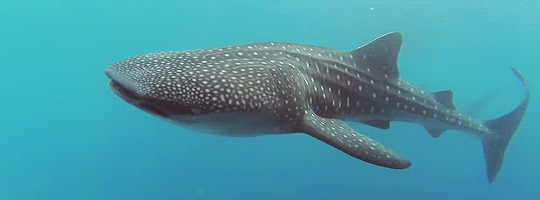
The great hammerhead (classified as critically endangered)

Dusky sharks are officially endangered. They are highly sought after for finning(a practice where fishermen catch and cut the fins from shark ,throw them back into the ocean defenseless to prey ,bleeding out and unable to properly float).
Sand tiger sharks are classified as critically endangered. They have 1-2 pups every two to three’s years making it much more harder for their populations to naturally replenish.
Ganges shark-very rarely seen and it is estimated that approximately 250 of this species are alive. They are true river sharks(can inhabit freshwater) and a unique threat to them is pollution.
To give these sharks and many others a fighting chance,sustainable fishing practices should be enforced and ecosystem pollution should be reduced.
#conservation#nature#ocean#sharks#great white shark#whale shark#shark#sealife#overfishing#extinction#sharksofinstagram#wild animals#sustainable solutions#sustainablelifestyle#sustainability#oceanlife#pollution#wildlife#naturism#marine science#marine biology
194 notes
·
View notes
Link
3 notes
·
View notes
Photo
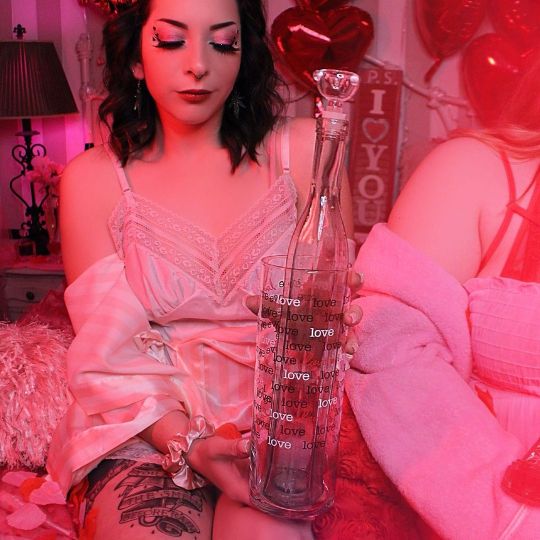
💕🛸You know the galaxies of my heart.🛸💕 . ✨Item description: An all glass gravity b0ng ft. a festive Valentine’s Day cylinder decorated in the word “LOVE” in a couple different fonts & colors. Paired with a bubble glass bowl & vintage glass bottle. . Status: ✅Available . 💌Dm for purchasing inquiries💌 . 👋🏼 New here? Welcome to Ganja Glass Co! We up cycle forgotten glass into functional smoking devices! My name is Sara & I’m an autistic artist just doing what I love to do best, ART! Thanks for checking out this post & welcome to the fam! 👩🏻🎨💕 . 📸: @puff.puff.pose_photography 💃🏻: @onehundred_branches . #ecofriendlyproducts #ecoconscious #sustainabilty #sustainablelifestyle #sustainableshopping #thriftstorefinds #thrifting #thanksitsthrifted #thriftshopping #secondhand #secondhandfirst #shopsecondhand #smallbizlife #smallbusinessbabes #shopsmallbusinesses #smallbusinessowner #smallbusinesssupport #supportsmallbusinesses #bossbabelife #smallbusinessesrock #smallbusinesstips #actuallyautistic (at Los Angeles, California) https://www.instagram.com/p/CoL3q4GLrYV/?igshid=NGJjMDIxMWI=
#ecofriendlyproducts#ecoconscious#sustainabilty#sustainablelifestyle#sustainableshopping#thriftstorefinds#thrifting#thanksitsthrifted#thriftshopping#secondhand#secondhandfirst#shopsecondhand#smallbizlife#smallbusinessbabes#shopsmallbusinesses#smallbusinessowner#smallbusinesssupport#supportsmallbusinesses#bossbabelife#smallbusinessesrock#smallbusinesstips#actuallyautistic
2 notes
·
View notes
Text

Animal lovers and conservationists unite: May 20 is National Endangered Species Day. This is a day to consider the dwindling populations of certain animals and work together to help. Environmental conservation didn’t gain traction until the mid-1800s. America’s Endangered Species Act of 1973 sparked both domestic and international conservation by providing a framework for protection.
Even today some remain critical of human efforts to make the world more habitable for endangered animals. They argue that natural selection should decide which species live or die. But let’s remember that humans have an unprecedented effect on the planet, which can have negative consequences on the lives of other animals. 🐯
#NationalEndangeredSpeciesDay#EndangeredSpeciesDay#endangeredspecies#endangered#sustainable#sustainability#sustainableliving#sustainablebusiness#sustainablecommunities#sustainablegoals#sustainablelifestyle#sustainablelife#conservation#work#help#environmental#bsogood
5 notes
·
View notes
Text
#sustainableworld#sustainablefood#sustainablehousing#sustainableenergy#newparadigm#consiousliving#conscientiousliving#creatingthefuture#opensourcesustainability#globalsustainability#globaltransformation#onecommunityglobal#sustainablecommunity#ecovillage#highestgoodliving#onecommunity#sustainability#opensource#permaculture#solutionmodels#greenliving#highestgood#teacherdemonstrationhubs#sustainablcivilization#radicalsustainability#sustainablelife#sustainablelifestyle#sustainablesociety#fulfilledliving#thevenusproject
0 notes